
JOURNAL OF MATHEMATICAL IMAGING AND VISION
metrics 2024
Empowering the Future of Imaging with Mathematical Rigor
Introduction
JOURNAL OF MATHEMATICAL IMAGING AND VISION, published by Springer, stands as a significant platform for advancing the fields of applied mathematics, computer vision, and pattern recognition, among others. With an ISSN of 0924-9907 and an E-ISSN of 1573-7683, this esteemed journal is based in the Netherlands and has been contributing to the scholarly discourse since its inception in 1992, with a converged focus through 2024. It has achieved reputable standings within several quartiles, including Q2 rankings across applied mathematics, geometry and topology, and condensed matter physics, reflecting its impact and relevance. Notably, the journal ranks within the top 5% in Geometry and Topology and maintains robust standings in Statistics and Probability. The JOURNAL OF MATHEMATICAL IMAGING AND VISION is dedicated to publishing high-quality research that bridges theoretical perspectives with practical applications, making it an essential resource for researchers, professionals, and students who are exploring the cutting-edge of mathematical imaging and its interdisciplinary applications.
Metrics 2024
 0.68
0.68 1.30
1.30 1.60
1.60 81
81Metrics History
Rank 2024
Scopus
IF (Web Of Science)
JCI (Web Of Science)
Quartile History
Similar Journals

IMAGING SCIENCE JOURNAL
Unveiling the Future of Media Technology and VisionImaging Science Journal, published by Taylor & Francis Ltd, serves as a vital resource for researchers and professionals in the fields of computer vision, pattern recognition, and media technology. With an ISSN of 1368-2199 and an E-ISSN of 1743-131X, this journal has been fostering scholarly dialogue since its inception in 1997, with a converged content offering extending through 2024. Its categorization in Quartile 4 in Computer Vision and Pattern Recognition and Quartile 3 in Media Technology highlights its relevance and contributions to emerging trends in these domains. Although it ranks 36th in the Engineering - Media Technology category and 96th in Computer Science - Computer Vision and Pattern Recognition, its innovative research and insights continue to attract the attention of scholars dedicated to advancing knowledge at the intersection of imaging technologies. Offering versatile access options, this journal is essential for students, researchers, and professionals aiming to stay informed and engaged in the rapidly evolving landscape of imaging science.
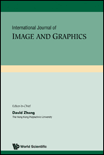
International Journal of Image and Graphics
Transforming Ideas into Stunning Visual RealitiesInternational Journal of Image and Graphics, published by World Scientific Publishing Co. Pte Ltd, serves as an essential platform for scholars and practitioners in the realms of Computer Graphics, Computer-Aided Design, and Computer Vision and Pattern Recognition. Established in 2001 and based in Singapore, this journal has become increasingly influential, with a reputation reflected in its Q3 and Q4 rankings across key categories in Scopus, highlighting its growing impact in the academic community. Open access options remain limited; however, the journal's commitment to disseminating high-quality research allows for a rich exchange of ideas among professionals and students alike. As the 2023 metrics indicate, contributions to the journal not only enhance individual academic portfolios but also promote advancements in image processing, fostering innovation and growth within the discipline until at least 2024. It is thus a vital resource for anyone looking to deepen their knowledge and understanding of contemporary trends and technologies in image processing and related fields.

VISUAL COMPUTER
Shaping Tomorrow’s Visual Technologies TodayVISUAL COMPUTER is a prestigious journal published by Springer, focusing on the dynamic fields of computer graphics, computer-aided design, computer vision, and software. Established in 1985, this interdisciplinary journal serves as a vital platform for sharing innovative research, applications, and developments crucial to the advancement of visual computing technologies. With a notable Q2 ranking in various categories, including Computer Graphics and Computer-Aided Design, and Computer Vision and Pattern Recognition, VISUAL COMPUTER demonstrates a solid impact within the academic community, marked by its Scopus rankings that reflect its significant contributions to the field. While the journal does not offer open access, it remains a reliable source of high-quality content for researchers, professionals, and students eager to stay abreast of emerging trends and techniques, ultimately fostering collaboration and knowledge exchange within the rapidly evolving landscape of visual computing.

CAAI Transactions on Intelligence Technology
Unlocking Insights in Computer Vision and NetworksCAAI Transactions on Intelligence Technology is a premier peer-reviewed journal published by WILEY, dedicated to advancing the fields of Artificial Intelligence, Computer Networks and Communications, Computer Vision and Pattern Recognition, Human-Computer Interaction, and Information Systems. Since its inception in 2017, this Open Access journal has rapidly ascended the ranks, achieving Q1 quartile status across multiple categories as of 2023, and is recognized for its rigorous standards and innovative research dissemination, evidenced by impressive Scopus rankings, including Rank #12 in Computer Vision and Pattern Recognition. Through its commitment to providing a platform for high-quality research, the journal invites contributions from scholars globally, fostering a collaborative environment that stimulates intellectual exchange and encourages advancements in intelligent technology. Addressed to researchers, professionals, and students alike, CAAI Transactions on Intelligence Technology serves as a vital resource for those aiming to stay at the forefront of technological innovation.
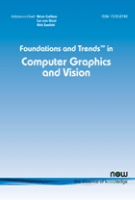
Foundations and Trends in Computer Graphics and Vision
Unveiling the Foundations of Visual InnovationFoundations and Trends in Computer Graphics and Vision, published by NOW PUBLISHERS INC, is a premier journal dedicated to advancing the fields of computer graphics and vision. With an impressive impact factor and ranked Q1 in the Computer Vision and Pattern Recognition category, this journal has established itself as a vital resource for cutting-edge research and trends. Spanning from 2005 to 2024, it covers a wide array of topics within its scope, featuring comprehensive reviews and insights that are essential for professionals, researchers, and students alike. The journal’s high Scopus rank, placing it in the top 4 of 106 in its discipline, underscores its relevance and authority in the field. While currently not offering open access, the importance of its curated content makes it a valuable addition to any academic library and a must-read for those looking to stay at the forefront of computer graphics and vision advancements.

Image Processing On Line
Transforming insights into breakthroughs in image processing.Image Processing On Line (ISSN: 2105-1232, E-ISSN: 2105-1232) is a pioneering open-access journal published by IMAGE PROCESSING ONLINE-IPOL since 2011, dedicated to advancing the field of image processing through the dissemination of high-quality research and innovative methodologies. Based in France, the journal serves as a platform for researchers, professionals, and students to share insights and breakthroughs in the rapidly evolving domains of Signal Processing and Software. With its current ranking as Q4 in both categories according to the 2023 category quartiles, and a Scopus ranking highlighting its significance within the computer science field, the journal is focused on nurturing contributions that push the boundaries of image processing techniques. Accessible to a global audience, Image Processing On Line is crucial for those engaged in both theoretical explorations and practical applications, ensuring a collaborative repository of knowledge that fosters innovation and development in this vital area of technology.
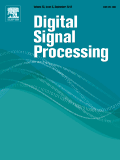
DIGITAL SIGNAL PROCESSING
Advancing the Frontiers of Digital Signal ProcessingDIGITAL SIGNAL PROCESSING is a leading academic journal published by Academic Press Inc Elsevier Science, serving as a vital resource in the fields of applied mathematics, artificial intelligence, signal processing, and electrical engineering. With an impressive set of rankings, including a Q2 designation in multiple categories such as Applied Mathematics and Computer Vision and Pattern Recognition, this journal aims to disseminate high-quality research that addresses both theoretical and practical aspects of digital signal processing. Its rigorous peer-review process ensures the publication of original articles, review papers, and innovative applications, making it an essential platform for researchers and professionals dedicated to advancing this dynamic field. While currently not an open-access journal, it maintains a significant impact factor, reflecting its esteemed position within the academic community. The journal's ongoing commitment to exploring new trends and methodologies positions it at the forefront of digital signal processing research, driving both scholarly inquiry and practical application from 1991 to 2024.
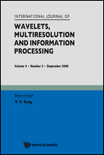
International Journal of Wavelets Multiresolution and Information Processing
Exploring the Frontiers of Wavelet Theory and Signal ProcessingWelcome to the International Journal of Wavelets, Multiresolution and Information Processing, a leading platform published by World Scientific Publishing Co. Pte Ltd that explores the intricate intersections of applied mathematics, signal processing, and information systems. Since its inception in 2006, this journal has provided a robust avenue for scholars and practitioners to disseminate innovative research and developments in wavelet theory and its multidisciplinary applications, providing valuable insights into complex problem-solving across various fields. With an impact factor that reflects its rigorous peer-review process and commitment to quality, the journal holds a commendable Q3 category ranking in Applied Mathematics, Information Systems, and Signal Processing as of 2023. The journal is housed in Singapore and serves a global audience, ensuring that groundbreaking research is accessible to all. Emphasizing open discourse and collaboration, the International Journal of Wavelets, Multiresolution and Information Processing is an essential resource for researchers, professionals, and students aiming to advance their understanding and practical use of wavelet and multiresolution techniques.
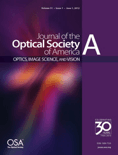
JOURNAL OF THE OPTICAL SOCIETY OF AMERICA A-OPTICS IMAGE SCIENCE AND VISION
Advancing Vision Through Cutting-Edge ResearchJOURNAL OF THE OPTICAL SOCIETY OF AMERICA A-OPTICS IMAGE SCIENCE AND VISION, published by Optica Publishing Group, is a leading journal in the fields of optics, image science, and vision. With a rich history dating back to 1979, it serves as an essential platform for disseminating cutting-edge research and developments from 1984 to 2024. The journal covers a wide array of topics, including atomic and molecular physics, electronic and optical materials, and pattern recognition in computer vision. Its prestigious categorization in the Q2 quartile for Atomic and Molecular Physics and Optics and its Q3 rankings in Computer Vision and Medical fields indicate the high-level contributions it fosters within the scientific community. Researchers will benefit from its commitment to rigorous peer review and its role in advancing knowledge at the intersection of science and application. Although it is not an open-access journal, the quality of content attainable here is invaluable for academics, industry professionals, and students eager to explore the forefront of optical science.

International Journal on Document Analysis and Recognition
Transforming Document Processing with Cutting-edge ResearchInternational Journal on Document Analysis and Recognition (IJDAR), published by Springer Heidelberg, stands at the forefront of research and advancements in the field of document analysis, computer vision, and pattern recognition. With its ISSN 1433-2833 and E-ISSN 1433-2825, the journal is an essential resource for researchers and practitioners focusing on innovations in automatic document processing, image analysis, and artificial intelligence applications in document retrieval and recognition. Recognized as a Q1 journal in multiple relevant categories, including Computer Science Applications, Computer Vision and Pattern Recognition, and Software, IJDAR boasts impressive Scopus rankings that position it among the top-tier publications in these domains. The journal’s converged publication years from 1998 to 2024 offer a rich repository of knowledge essential for both theoretical and practical advancements, ensuring that researchers, professionals, and students can keep pace with the latest findings and methodologies. Access options may vary, but the journal continuously strives to facilitate the dissemination of high-quality research that contributes significantly to the academic discourse in document analysis and recognition.